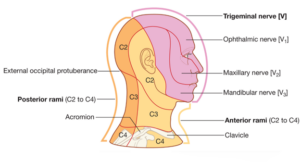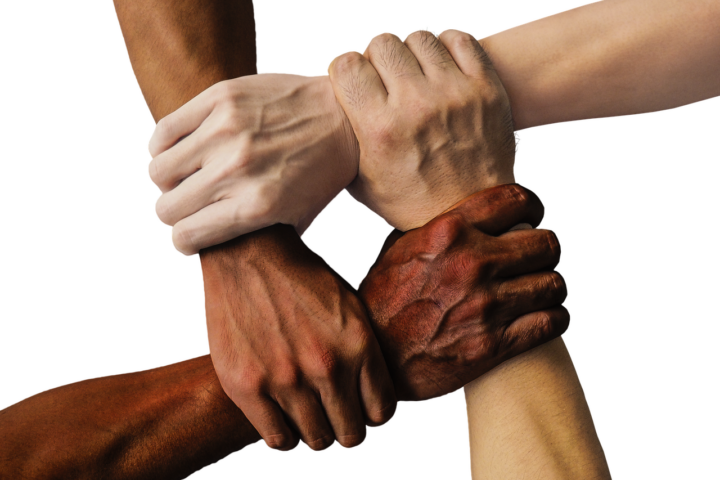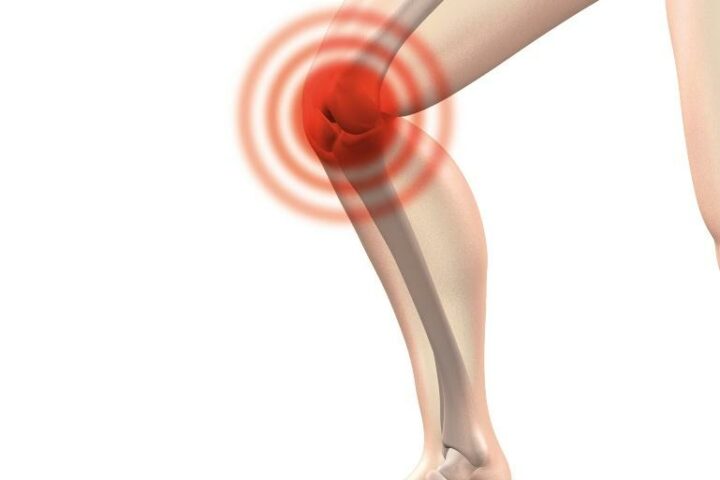Migraines suck. Plain and simple. Ok blog over, good talk guys.
In all seriousness migraines represent a significant problem to people everywhere. In 2006, the European Headache Federation and World Headache Alliance described migraine as a “forgotten epidemic”. Migraine represents the second highest cause of global disability across all sexes and ages, and is the number one cause of years lived with disability globally among those aged 15-49. There are two main things that go wrong in migraines. The first is a sensitization of the system in the brainstem that regulates pain for the head, face, eyes, and some intracranial structures (the brain itself has no pain receptors). This system becomes wound up, and irritation directly from one of these sources, or indirectly from other sources we’ll discuss, can trigger a migraine. The second problem is spontaneous activity of different regions of the brain and brainstem both before and during the headache. This phenomenon is called a ‘prodrome’, but you can think is this as a type of seizure (this is an analogy, it is not a seizure) where certain systems become spontaneously activated. This leads to many different symptoms. Some people may see spots, some may experience numbness in their body, dizziness, nausea, tremors, slurred speech, vomiting, all depending on what part of the brain is affected. To be precise about it, migraines are “a complex neurological disorder that affects multiple cortical, subcortical, and brainstem areas that regulate autonomic, affective, cognitive, and sensory functions”…or whatever.
So now that we’ve discussed a little bit of the true complexity of migraine, let’s talk a little bit about how to fix it. One of the most important things you can do is keep a headache journal. There are many apps nowadays that can be downloaded to make it more convenient. Essentially, when you get a headache, write down everything that happened prior. Stress, food, exercise, sleep, bright lights, strong smells, hormonal fluctuations, dehydration, until you uncover a pattern. We’re still learning more and more about the genetic and environmental causes of migraines, but one of the easiest and most effective things you can do is identify your trigger and then remove it. Elimination diets can be useful for this as well. I’ve personally had success with many patients using a modified ketogenic diet. This diet was developed for medication resistant seizures, but with the similarities between migraines and seizures I have seen positive results applying it to my migraine patients.
I also mentioned that sensitization of the trigeminal system plays a role. This system interprets pain for the head, face, jaw, eyes, some intracranial structures, as well as inputs from the upper cervical spine. Dealing with any  problems in these areas can be beneficial in treating migraines, and is why Chiropractic has such a positive history helping migraine patients. Upper cervical adjusting and muscle release will have a large input to this system, and reducing chronic irritation from this area will affect how much the system is sensitized. The same is true if you have TMJ dysfunction. The eyes are often an overlooked input as well. An oculomotor exam can identify weaknesses that may be causing compensation and trigger points in these muscles. This can be easily remedied with specific exercises designed to strengthen the weak muscles.
problems in these areas can be beneficial in treating migraines, and is why Chiropractic has such a positive history helping migraine patients. Upper cervical adjusting and muscle release will have a large input to this system, and reducing chronic irritation from this area will affect how much the system is sensitized. The same is true if you have TMJ dysfunction. The eyes are often an overlooked input as well. An oculomotor exam can identify weaknesses that may be causing compensation and trigger points in these muscles. This can be easily remedied with specific exercises designed to strengthen the weak muscles.
It’s difficult to dive into such a complicated topic in a short blog, but there is plenty of food for thought. Are you ready to alleviate your migraines? Call (703) 723-9355 for an appointment with one of our many chiropractors, physical therapists, and acupuncturists that can help!
Steiner TJ, Stovner LJ, Vos T, Jensen R, Katsarava Z. Migraine is first cause of disability in under 50s: will health politicians now take notice? The Journal of Headache and Pain. 2018;19(1):17.




